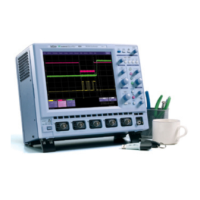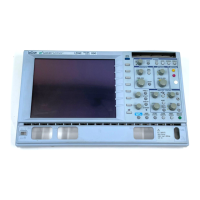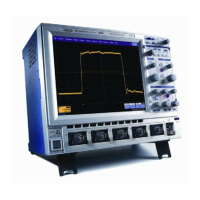X-Stream Operator’s Manual
WM-OM-E Rev I 353
Analyzer Reference Manual for more information.
4. Turn on and configure the method selected: Once a channel analysis method is
selected, it needs to be configured and turned on.
5. Review the problems the DDA identifies: Review the head signal areas that the DDA
identifies as having the poorest quality or differences from a reference. If the method
selected is Channel Emulation with Stop on, SAM on, or Analog Compare, head signal
sections that exceed a user-specified threshold will be displayed. If no sections exceed the
selected threshold, it may be desirable to adjust the threshold until violations are identified.
Head Signal Filtering
When you are visually analyzing or measuring a servo head signal, it is usually desirable to first
filter the head signal to remove noise. In addition, if boost is provided in the servo system, adding
the corresponding boost to the displayed or measured head signal may also be beneficial. This
allows analysis of the head signal as the servo processing system sees it.
The ability to set values for the -3 dB cutoff, boost and group delay is provided by this Servo
Analysis feature. In addition, the filter provided can be easily set up to view or measure any head
signal.
Analog Compare
When you are attempting to locate a problem in a wedge signal, for example, the same
complications are encountered as with Channel Analysis --- with similar solutions.
Noise Analysis
Disk noise parameters enable parameter measurements of media signal-to-noise (msnr), residual
(electronics) signal-to-noise (rsnr), and the ratio of media to residual signal-to-noise (m_to_r). The
calculation of all three parameters is based on the distribution of the averaged Viterbi input
samples.
• msnr can be applied to any single-frequency, sector-based data pattern. The
single-frequency data will be sampled at the peaks (maxima), zero crossings, and
troughs (minima). Any deviations from the ideal sample points will be a result of noise.
By performing multiple reads, random noise can be averaged away. With this
measurement, the repeating media noise level can be derived by msnr.
• rsnr can be applied to any single-frequency, sector-based data pattern. The
single-frequency data will be sampled at the peaks (maxima), zero-crossings, and
troughs (minima). Any deviations from the ideal sample points will be a result of noise.
By performing multiple reads, random noise can be quantified. With this measurement,
the non-repeating residual (electronics) noise level can be derived by rsnr.
• m_to_r can be applied to any single-frequency, sector-based data pattern. The msnr is
compared with the rsnr. The resulting ratio indicates whether the signal is dominated
by media noise if it is greater than 1.00, or dominated by residual (electronics) noise if
less than 1.00.

